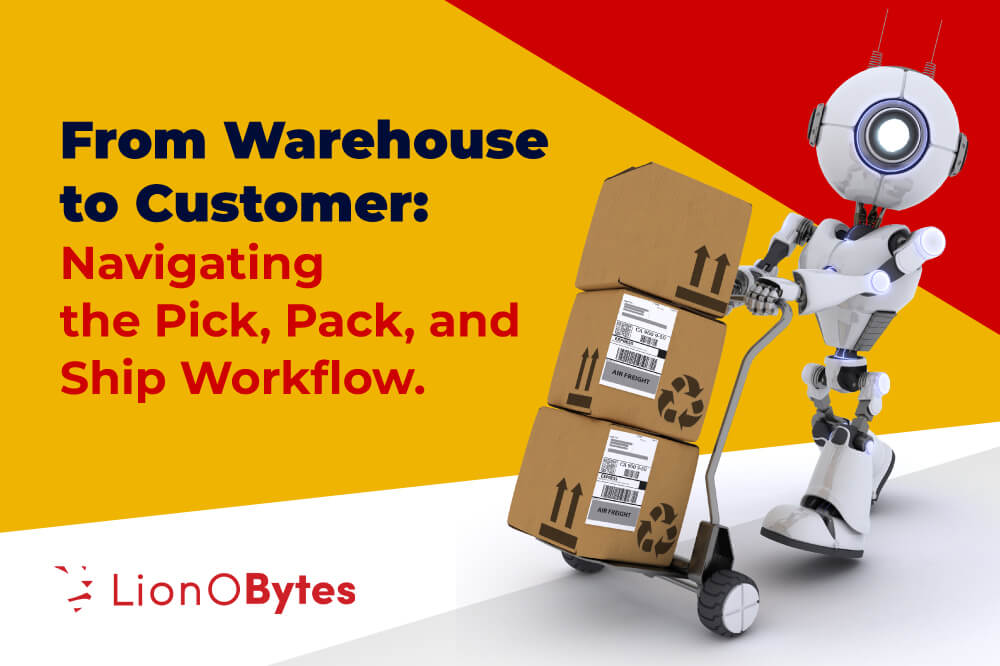Pick, pack, and ship is a process rule for direct order fulfillment for getting the needed products ready and shipped to customers. Such is the heart of any e-commerce or retail business that sells physical goods.
They consist of:
- Picking: This is the actual choice of the proper inventory that fulfills the order of a customer. For this, the items would be located in the storeroom or warehouse until it is time that they should be brought to the processing area.
- A Pack: When those selected items are done picking, they must be packed well to ensure safe transit. This means that packing can be done suitably. Installing other packaging that considers, if not packed in a box, proper stickers or documentation are placed or installed on the products.
- Ship: The last step involves handing over the packed order to a shipping carrier to deliver it to the customer. This step also includes the creation of track information and updates to the customer about the shipment of their orders.
All these approaches generally make sure that customers get their orders in time and correctly, which is an aspect critical to maintaining customer satisfaction and loyalty.
Benefits of Pick Pack and Ship
Implementing an efficient Pick, Pack, and Ship process offers numerous benefits for businesses, including:
Improved Customer Satisfaction
Fast and accurate order fulfillment leads to happy customers. When orders are picked, packed, and shipped correctly and on time, customers are more likely to return and recommend your business.
Increased Operational Efficiency
A well-organized PPS process reduces errors, minimizes delays, and optimizes resource utilization. This translates to cost savings and higher productivity.
Scalability
As your business grows, a streamlined PPS process can easily scale to handle higher order volumes without compromising quality or speed.
Reduced Costs
Efficient picking, packing, and shipping processes help reduce labor costs, shipping expenses, and the risk of returns due to errors.
Enhanced Inventory Management
The PPS process is closely tied to inventory management. Accurate picking ensures that inventory levels are updated in real-time, reducing the risk of stockouts or overstocking.
Customer Satisfaction
Quicker and accurate deliveries result in good reviews and repeat orders.
Challenges of Pick Pack and Ship
While the good is obvious, challenges in implementing an effective Pick Pack Ship system are often faced by businesses:
Inventory Management: Keeping stocks on levels and making sure they are accurately picked becomes pretty difficult in big warehouses.
Human Error: Manual processes are highly error-prone, delivering an incorrect product or a miscommunication in packaging.
High Operating Costs: Labor, packing supplies, and shipping fees can all add up with surprising speed.
Time Constraints: Very tight deadlines for deliveries can strain resources, especially during peak season.
Tips to Optimize Your Pick, Pack, and Ship Process
LionOBytes offers unparalleled assistance in PPS. To fully exploit the benefits of PPS, implement the following recommendations:
Invest in Technology
Use warehouse or order management systems to automate and streamline the PPS process. These tools can help track inventory, optimize picking routes, and reduce errors.
Optimize Warehouse Layout
Organize your pick pack and ship warehouse strategically by placing high-demand items closer to the packing area. Use clear labeling and signage to make it easier for employees to locate products.
Implement Quality Control Checks
Introduce multiple checkpoints during the picking and packing process to ensure accuracy. For example, use barcode scanners to verify that the correct items are being picked.
Choose the Right Packaging
Use packaging materials that are both cost-effective and protective. Avoid over-packing, as this can increase shipping costs, but ensure that items are secure to prevent damage during transit.
Negotiate with Shipping Carriers
Partner with reliable shipping carriers and negotiate rates based on your shipping volume. Consider offering multiple shipping options to customers, such as standard, expedited, or free shipping.
Train Your Team
Provide comprehensive training to your warehouse staff to ensure they understand the PPS process and can perform their tasks efficiently. Regularly update training to incorporate new technologies or procedures.
Monitor and Analyze Performance
Track key performance indicators (KPIs) such as order accuracy, picking speed, and shipping times. Use this data to identify bottlenecks and areas for improvement.
Plan for Peak Seasons
Anticipate increased demand during peak seasons and prepare accordingly. This may involve hiring temporary staff, increasing inventory levels, or extending working hours.
Offer Real-Time Order Tracking
Provide customers with real-time tracking information so they can monitor the status of their orders. This transparency can enhance customer satisfaction and reduce inquiries.
Outsource if Necessary
If managing PPS in-house becomes overwhelming, consider outsourcing to a third-party logistics provider. They have the expertise and resources to handle order fulfillment efficiently.
Accelerate your order fulfillments and bring efficiency with LionO360 ERP Pick Pack Ship functionality.
Wrap Up
The Pick, Pack, and Ship process is essential for fulfilling your orders and represents critical prospects for the satisfaction of customers, on the one hand, and the success of any business, on the other hand. Knowing what they are, what challenges there are most likely to be, and what best practices to implement, a business can optimize its PPS process to offer customers a very smooth and efficient experience.
Equally, new entrants or those seeking to improve on existing practices find it worthwhile to invest time and resources in refining their PPS process. After all, a smooth Pick, Pack, and Ship process enhances your productivity while increasing the strength of your brand and customer loyalty.
